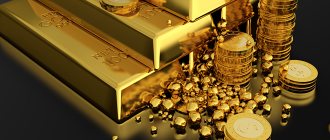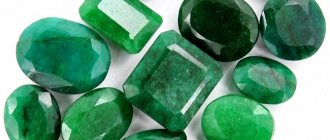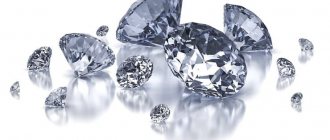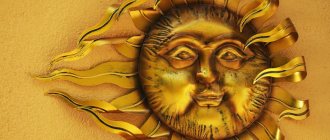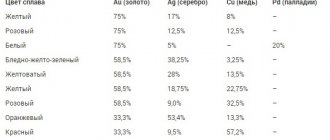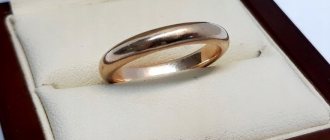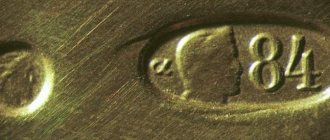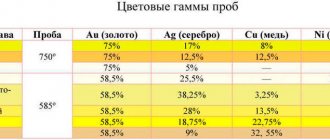Welcome to our page. Today we will talk about alloys of precious metals with common ones, their properties, color and qualities important for jewelry. Already at the dawn of mankind, gold was ubiquitous. It was used as the first currency, decorated the armor of warriors and made valuable jewelry. Working with metal was easy, expensive jewelry and coins were a measure of wealth and influence.
Today, jewelers use gold alloys with new additives, and sophisticated shades give jewelry a special originality.
Why don't jewelers use pure raw materials?
The main reason why gold is not used undiluted is its softness. To prevent gold items from deforming and to increase their wear resistance, additives are used. The shade of the jewelry depends on the ligature and its cost decreases. Heavy 985 gold becomes lighter with a ligature.
Metals used in alloys with gold
Different alloys may differ in shade, just as materials of the same shade can differ in the alloy included in it and the amount of precious metal:
- Silver gives the alloy softness. As the ligature increases, the shade changes from yellow with an admixture of green (30%) to pale lemon (60%).
- Copper is often used by jewelers. The hue changes to red - the color of jewelry, familiar to everyone. Due to reduced corrosion resistance, it is used in combination with a silver alloy.
- With nickel, hardness increases, malleability increases, and magnetic properties appear. The color turns out to be light yellow.
- With palladium the melting point increases. The color changes greatly: with a low additive content (10%) the color is almost white. Rarely used by jewelers due to the refractoriness of the alloy.
- Platinum makes the melting point higher. The material is extremely ductile and less susceptible to corrosion. The color changes sharply; even with the addition of a small amount of alloy (8%), platinum changes the color of the alloy to almost white.
- Ruthenium is a platinum group metal. The name "ruthenia" means "Russia" in Latin. It is added to increase strength. The products are used to treat oncology. The alloy has a black tint.
- Together with iridium, wear resistance increases, the color does not change.
- Osmium imparts refractoriness to the alloy, the material becomes harder, and elasticity increases. The color is characteristic of gold ore.
- An alloy of 22% aluminum and 88% gold is indistinguishable from pure aurum. An alloy of gold and aluminum with the addition of copper has the same color.
- Cadmium makes the substance fusible. As the cadmium content increases, the color changes from yellow to gray. It is practically not used in the jewelry industry: it is an extremely fragile material.
- Zinc colors the alloy in a greenish tint, increasing the fragility of the material. Reduces melting point.
Every year more and more new alloys appear, their results are used in various spheres of life of a modern person.
Imitation gold
The metal may not contain Au, but must have similar external characteristics to be considered similar to the original. Such products have no value, but they have a wide range of applications, for example, the production of costume jewelry is the main direction. List of metals that imitate gold alloy:
- bronze: copper with the addition of aluminum, the first component gives a red tint, the second brightens the tone;
- vermeil: silver with gilding, the appearance of Au is preserved, but the products are lighter;
- Hameltonmetal: a method of coating products that was previously often used; the metal contained copper and zinc.
Colors of gold alloys depending on composition
The color depends on the ratio of the components taken. Jewelry that looks the same can have different prices and properties thanks to extensive research in this area.
Yellow
The classic color is the result of a combination with Cu and Ag. Improves wear resistance. Yellow color in jewelry has been very popular for several centuries. 750 and 585 are typical gold content values for this color.
Black
A very effective color for modern jewelry, it can be obtained in several ways:
- oxidation with cobalt;
- during dressing with the addition of carbon;
- patting;
- Rhodium or ruthenium plating.
White
Color is obtained by adding a variety of ligatures. It can be manganese, nickel, or palladium. Jewelry of this color is very beautiful, white with a yellow undertone. They first began to produce it in the first decade of the 20th century to replace a refractory alloy with platinum.
Red
As a result of combining gold with copper, a pink or red alloy is obtained. This species spread throughout Europe in the 20th century. For Russia, its appearance dates back to the 18th century. Today it is popular as a base in engagement rings.
Other
Greenish-yellow is the result of fusion with a silver ligature. Consists of 73% gold and 27% silver. The name “electrum” came to us from Ancient history as a natural compound. A greenish tint is characteristic of alloys with the addition of cadmium. Jewelry made from such an alloy is considered harmful to health. Due to the toxicity of the ligature, they should not be worn for long periods of time.
When alloyed with indium, it produces a spectacular blue color.
For a long time, jewelers around the world tried to get purple gold. The experiments were successful in 2002. 19 carat (750 carat) purple gold contains additives of aluminum and palladium. It seems difficult to care for such products. The material is very fragile and is used in jewelry only as individual elements.
Natural reserves of electrum
There is reliable information that electrum was brought to Egypt from Punt. In the modern world, this is East Africa. Another supply was established from the territory of the Plateau and to the east of Rhodesia.
Pliny gave a detailed assessment of the precious materials of that time. He said that if the composition contains more than 70% of a white metal, it will be silver, if less than 15%, it will be gold.
Electrum was also mentioned in the Odyssey. There he was mentioned in conversations about gold jewelry plated with silver. Today, these products are not relevant, but then they were in great demand, since white metal was sometimes valued more than gold.
The electron-rich lands (another name for the composition) of that time are no longer so. The metal, which was practically on the surface, had been collected long ago. To a greater extent this happened during the period of “fever”. Therefore, humanity began to think about obtaining it artificially, because it is no longer possible or extremely difficult to find it in nature.
It can only be found in Western Anatolia. This is one of the areas located in Turkey. But its extraction has already lost popularity due to the well-established technology for producing electrum on its own; moreover, the natural material may have an undesirable admixture of copper. While with the manual method you can avoid such situations and do not devote time to freeing the alloy from unnecessary contaminating materials.
Alloy markings
Gold-containing alloys have a common marking. It is based on the designation in Cyrillic letters:
- Zl – gold;
- Pd – palladium;
- Pl – platinum;
- Kd – cadmium;
- Wed – silver;
- M – copper;
- N – nickel;
- C – zinc.
Next to the letters indicating the metal is a number indicating the percentage of the material contained. For precious metals, the content is indicated in fractions of a thousand, for the rest - in hundredths, that is, as a percentage.
Alloy sampling systems
Previously, countries had different valuation systems for precious metals. With the development of progress, their number has decreased. Today we know what systems there are - metric and carat.
Metric
It is more widespread than others in the world and the only one operating today in Russia. The principle of the system is to indicate the amount of gold per kilogram of material. According to this system, the most common samples are 375, 500, 750, 958 and 999.
Carat
The karate system is widely used in Europe and the USA. It contains 24 parts (carats) corresponding to 100% precious metal content. For example, a 10K hallmark means that out of 24 parts of the alloy, 10 are pure gold.
Zolotnikovaya
The system was used in Tsarist Russia and was abolished in 1927. It was based on the use of a unit of weight - the pound. One pound is 450 grams, or 96 spools. A metal with a purity of at least 36 spools was considered precious.
Lotovaya
The system was used in Old Europe. Back in the Middle Ages, silver and gold were measured in marks. One mark was equal to 16 lots. An alloy with a purity of at least 6 lots is considered precious, which corresponds to 375 purity.
Table 1. Correspondences of gold samples
| Zolotnikovaya | Metric | Lotovaya | Carat |
| 36 | 375 | 6 | 9 |
| 48 | 500 | 7 | 10 |
| 56 | 585 | 9 | 14 |
| 72 | 750 | 12 | 18 |
Table 2. Names of alloy, composition and colors of 583 samples
| № | Alloy name | Gold content, % | Silver content, % | Copper content,% | Nickel content, % | Content Other metals, % | Alloy color |
| 1 | ZlM583 | Au 58.3 | — | Cu 41.7 | — | — | bright red |
| 2 | ZlSrM583-20 | Au 58.3 | Ag 2.0 | Cu 39.7 | — | — | bright red |
| 3 | ZlSrM583-42 | Au 58.3 | Ag 4.2 | Cu 37.5 | — | — | bright red |
| 4 | ZlSrM583-80: | Au 58.3 | Ag 8.0 | Cu 33.7 | red | ||
| 5 | ZlSrM583-125 | Au 58.3 | Ag 12.5 | Cu 29.2 | — | — | red |
| 6 | ZlSrM583-146 | Au 58.3 | Ag 14.6 | Cu 27.1 | — | — | red |
| 7 | ZlSrM583-200 | Au 58.3 | Ag 20.0 | Cu 21.7 | — | — | reddish |
| 8 | ZlSrM583-217 | Au 58.3 | Ag 21.7 | Cu 20.0 | — | — | pale red |
| 9 | ZlSrM583-250 | Au 58.3 | Ag 25.0 | Cu 16.7 | — | — | greenish |
| 10 | ZlSrM583-300 | Au 58.3 | Ag 30.0 | Cu 11.7 | — | — | green |
| 11 | ZlSrM583-337 | Au 58.3 | Ag 33.7 | Cu 8.0 | — | — | green |
| 12 | ZlSr583-417 | Au 58.3 | %; Ag 41.7 | — | — | — | green |
| 13 | ZlSrMN3.2-35.7-2.8 | Au 58.3 | Ag 3.2 | Cu 35.7 | Ni 2.8 | — | pink |
| 14 | ZlMN35.4-6.3 | Au 58.3 | — | Cu 35.4 | Ni 6.3 | — | |
| 15 | ZlMN24.7-17 | : Au 58.3 | — | Cu 24.7 | %; Ni 17.0 | — | pale pink |
| 16 | ZlSrPd23.7-18 | Au 58.3 | Ag 23.7 | — | — | Pd 18.0 | white |
| 17 | ZlMNTs23.5-12.2-6 | Au 58.3 | Cu 23.5 | — | — | Ni 12.2 Zn 6.0 | white |
What causes metal to tarnish?
There may be several reasons for changing the appearance of a new ring:
- The new product was coated with a polishing compound. In this case, the skin on the finger will also darken. Contamination is easily removed.
- Unfortunately, sometimes a change in the color of a ring may indicate a low content of precious metal. We already know how easily inexpensive alloys can be passed off as jewelry.
- Body jewelry can respond to various changes in the body. Such stains from good jewelry can be easily cleaned.
- Gold deteriorates and becomes stained when exposed to mercury and iodine. We come into contact with the first substance as a last resort, but no one is safe from adding iodine to the water of a public swimming pool. When going to the pool, it is better to take off your jewelry, even if it is 375 standard.
Features of care
Jewelry alloys have low resistance to environmental factors. If left untreated, they will quickly lose their attractiveness. Therefore, you need to study the rules for caring for such jewelry in advance.
Does the alloy darken?
To understand whether a jewelry alloy darkens or not, you need to study its composition and coating. Products coated with silver will darken even if proper care is followed.
Is jewelry alloy susceptible to corrosion?
Without an additional protective coating, some alloys may rust if exposed to moisture for a long time. If the metal on which the jewelry is made has high corrosion resistance, the risk that the surfaces will become covered with rust is minimal.
Cleaning methods
To clean jewelry, you can use napkins or soft cloths. The use of cleaning products and soap is not recommended.
Medical alloy
One of the alloys similar to gold is used in the manufacture of medical instruments; dental crowns were previously made from it. It contains nickel, chromium and magnesium. The products are worn by people with a rare form of allergy to precious metals.
Expert opinion
Vsevolod Kozlovsky
6 years in jewelry making. Knows everything about samples and can identify a fake in 12 seconds
Unlike real gold, medical gold does not react to iodine: this is how you can distinguish a product made from medical gold from the real thing.
Also see how white gold is obtained by combining it with palladium:
